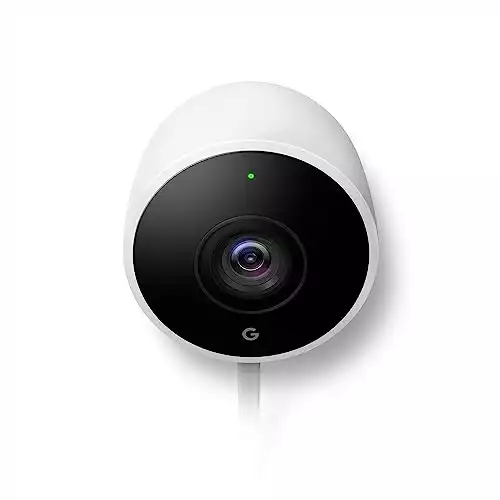
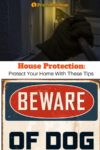
As someone who spends a lot of time preparing for disasters by building up a food stockpile and learning survival skills, I would be remiss not to also work on protecting my home.
After all, those food stockpiles don’t do me any good if looters can just enter my home and steal them!
A lot of people think home security involves getting a firearm. Yes, firearms are almost always a critical component of home defense.
Recommended Reading: Best Shotgun For Home Defense
However, it is only a small part of the planning and prep which needs to be done to ensure your family and property remain safe.
Part 1: Understanding Burglars
If you want to protect your home from burglars, you first need to dispel many of the myths we have about criminals.
Contrary to what those crime TV series show you, most burglars do not look like the boogeyman. Nor do they hit in the middle of the night.
Surprising Home Invasion Facts
- 20% of homes will be hit by a home invasion
- 90% of doors can be easily opened with “bump keys
- Most home invasions occur between 10 am and 3pm
- Lower-income homes are most likely to be targeted
- In 30% of non-violent home invasions, the criminal was known by the victim
- In 65% of violent home invasions, the criminal was known by the victim
- In 18% of home invasions, the victim lets the criminal into the home
- Approx 30% of burglaries occur through an open or unlocked window or door
The 3 Types of Home Burglars
Burglars can be broken down into three types. It is essential to know these types because certain kinds of burglars are more likely to strike your residence.
The majority of home invasions are by thieves and opportunists. To reduce your risk of getting targeted, you’ve got to make your home less appealing to these types of burglars.
1: Professionals
Contrary to common belief, most burglars are not professionals.
Professional burglars are very good at what they do and use their skills to target high-end locations such as mansions in wealthy neighborhoods.
A fence, security system, and cameras aren’t stopping this type of burglar. They are very organized and can quickly get around these obstacles.
The good news is that professional burglars are less likely to be violent. They get in and out quickly (often without being detected).
As professionals, their level of organization means they aren’t “trigger happy” and won’t panic and start shooting.
In short, dangerously disoriented crackheads don’t have the mindset to be professional burglars!
Most likely to hit: Wealthy neighborhoods
Deterred by: Not much – they can penetrate the most advanced security systems
2: Thieves
Thieves don’t have the specialized skills of professional burglars but still have mindsets capable of organization and rationalizing.
These are the criminals who will scope out houses to find easy targets. They look for signs of valuables, such as expensive appliances that can be seen through windows.
The good news is that thieves go for the easiest target. If your home looks even slightly more difficult to penetrate than your neighbor’s, you will likely be spared.
Most likely to hit: Homes in middle-class neighborhoods
Deterred by: Security systems, cameras, and dogs
3: Opportunists
Opportunists are the most dangerous type of burglar. They are often addicted to drugs (which destroy their decision-making abilities).
There is little or no planning before the break-in with opportunists. They might pick a home at random or decide to break in when they see a window left open at night. No scoping takes place beforehand.
The reason that opportunists are so dangerous is that they could panic. If caught mid-burglary, an opportunist might react by opening fire. Drugs can also make them violent.
Most likely to hit: Lower-income neighborhoods, student housing, and “easy targets.”
Deterred by: Quality locks, signs that someone is home
Part 2: Fortify Your Home
The easiest thing you can do to amp up your home defense is to avoid being targeted by criminals in the first place.
Some of these tactics will seem obvious. However, some things are probably putting your home security at risk that you aren’t even aware of – particularly your social media use.
1: Hide Evidence of Valuables
Many of us leave our curtains open during the day to get light in. Those windows also show potential criminals all the valuables you have in your home!
Even though thieves usually won’t take large items like TVs, seeing an expensive plasma TV is evidence that you have other valuables in the home.
The same goes for pricey decorations and gadgets in your home.
Thieves will also use your trash to choose a target.
Have you just bought a new laptop? Don’t toss the box in the trash where everyone can see it! It’s a calling card for what you’ve got inside.
Top Tips
- Keep valuables away from windows and doors.
- Don’t put appliance boxes in the trash.
2: Social Media
You have probably already heard that you shouldn’t post on social media about vacation plans.
However, it just takes one look at people’s Facebook feed to see how few people are minding this advice!
While we might vaguely know that criminals use social media to pick targets, you’ll probably be surprised to the extent.
A poll of incarcerated burglars found that 4 out of 5 burglars used social media to pick targets!
Not only did social media give them info about times they wouldn’t be home, but pictures of recent purchases showed them who to target.
Think that your privacy settings will protect you?
Think again!
Hackers can easily get into your social media accounts and use the info against you.
Don’t Post
- Vacation plans.
- Status updates of yourself while on vacation.
- Pictures showing high-value items in your home.
- Information about recent big purchases.
3: Get a Guard Dog
In a poll of convicted burglars, many criminals said that a dog would deter them from breaking into a home.
However, many of the criminals also said that guard dogs didn’t deter them. They noted that guard dogs are trained to protect their owners, not their property.
So, the dogs didn’t do much once the criminal got into the house.
Dogs seem to be best at deterring opportunist-type burglars. So consider a dog if you live in a low-income area often hit by opportunists.
Top Tips
- If you get a guard dog, ensure it is trained to bark.
- If you can’t get a dog, then consider a Beware of Dog sticker.
4: Security System
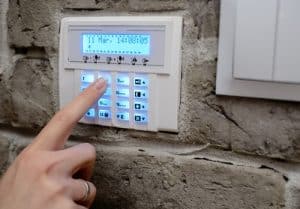
When it comes to opportunist-type burglars, a simple security system is usually enough to prevent a break-in.
However, only half of the polled burglars said that a security system would deter them from breaking into the home.
This is because many sophisticated thieves know that they can quickly get into the home and out again before the police arrive.
The average burglar spends 8-12 minutes inside. The average police response time is 7 minutes – but can be an hour for homes in remote locations!
When it comes to preventing home invasions by professional thieves (who target high-value targets), security systems aren’t much help. These professionals can often hack into the security system and turn it off.
Still, reducing the risk of a home invasion by 50% is huge. That makes it worth getting a home security system.
Top Tips
- If you can’t afford a security system, at least get a security sign to put outside your home.
- If you live in a high-end neighborhood likely to be hit by professionals, install the security system yourself. This makes it harder to hack.
- Your security system should include cellular backup signals so the alarm will still get out if the line is cut.
5: CCTV Security Cameras
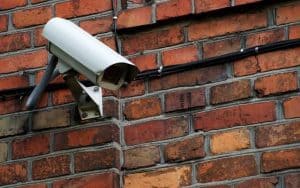
Security cameras are a completely different thing than alarm security systems. Whereas alarm systems will deter thieves, cameras don’t have the same effects.
After all, thieves can just hide their faces.
Camera systems only really help to gather evidence that can be used to find and prosecute criminals.
However, security cameras can be a great tool when used in combination with alarm systems.
For example, imagine that your alarm system picked up motion in the night. Using your phone, you could tap into the cameras to see whether the alarm was triggered by a burglar or a sleepwalking child.
This could prevent you from accidentally killing a family member – something that sadly occurs very frequently.
Cameras in front of your doorway can also help prevent thieves who push open the door to gain access. True, you should never open the door to someone you don’t know – but this is sometimes difficult when you are expecting delivery packages or guests.
The security camera lets you see and confirm the credentials of whoever is at the door before opening it.
This Nest Cam Outdoor Security Camera is well-reviewed on Amazon.
Features
- 24/7 live video
- Auto alerts when detects activity
- Weatherproof camera
- Built-in microphone – talk and listen
- Simple DIY install
6: Situational Awareness
The best thing you can do to improve your home defense is to work on situational awareness.
Home invasion statistics show that almost all thieves scope out their target in advance.
Often, the criminals come right to your door and ask for someone, pretending to be surprised when you say the person doesn’t live there.
Look out for:
- Utility workers in your street – Always call to confirm that work is authorized in that area. Criminals often pose as utility workers to watch people coming/going in the street.
- People going door-to-door – such as religious groups or political canvassers. Often these people are legit – but call their head office to confirm they were supposed to be in your area.
- Strange vehicles – especially with tinted windows. Anyone sitting in the car for a long time might be scoping out the area for targets. Take note of the license number and make/model of car!
- Anyone asking to use your bathroom – We want to be friendly and helpful, but this is often how thieves scout out your home.
- Broken motion sensor lights – My friend got robbed two days after her motion sensor lights were unscrewed.
- Windows or doors that “suddenly” became unlocked or ajar – Thieves (often posing as visitors or maintenance workers) sometimes enter during the day and unlock windows/doors for easier access later.
7: When You Are Away
Summer and holidays are the biggest times for home invasions because so many people are gone.
You must fake like you are still at home to prevent a home invasion.
Top Tips
- Use smartphone activated lights: In the past, you had to use timers to activate your lights, which meant they’d come on/off at the same time every day (something thieves know to look for!). Today, you can easily install smartphone-activated lights and turn them on/off randomly to fool thieves.
- Hold your mail: You’ll also want to have a neighbor pick up any flyers which get put on your door.
- Leave a car parked in the driveway.
- Put a pair of shoes on the front step.
- Have neighbors make footprints in fresh snow.
- Keep your TV on, or use a fake TV.
- ***Most importantly: TELL YOUR NEIGHBORS!*** The biggest deterrent to criminals (even more so than alarm systems) is nosy neighbors. Get to know your neighbors and have them look out for anything suspicious around your home while you are gone.
Part 3: Penetration Points
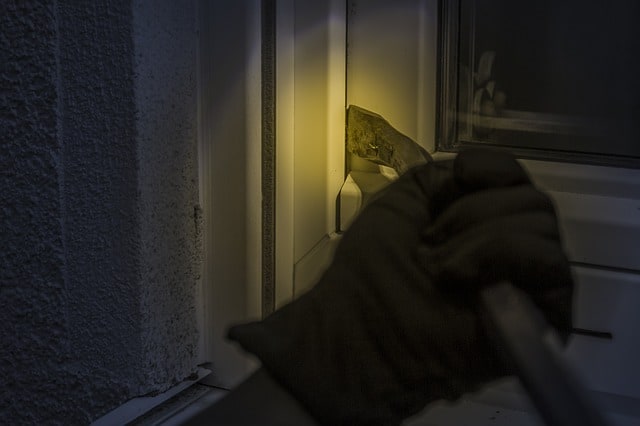
Home defense is often talked about as “adding a security fence” or getting “better locks on your doors.” These are important steps – but home defense is about understanding the penetration points to your home and securing them.
To make home defense work, you have to look at the bigger picture so your home is secured from every possible point of attack.
Let’s take a look at the various ways to secure your home:
Perimeter and Barrier
A lot of people confuse the terms “perimeter” and “barrier.”
The two are both integral to home defense, but completely different things:
- Perimeter: Distinctive areas outside and inside your home
- Barriers: Obstructions that you put up on perimeters to prevent intruders from entering.
To secure your home, you need to establish at least 4 perimeter zones and put up barriers in each.
1st Perimeter:
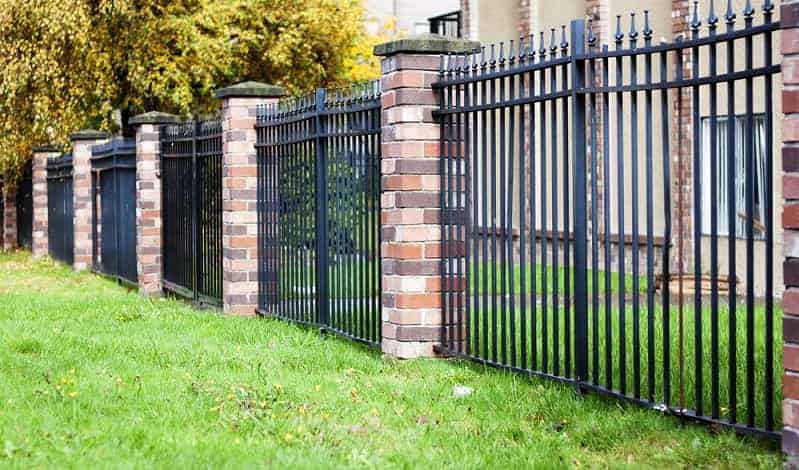
For most homes, the first perimeter is the property line.
A large wall or fence is an effective barrier.
2nd Perimeter:
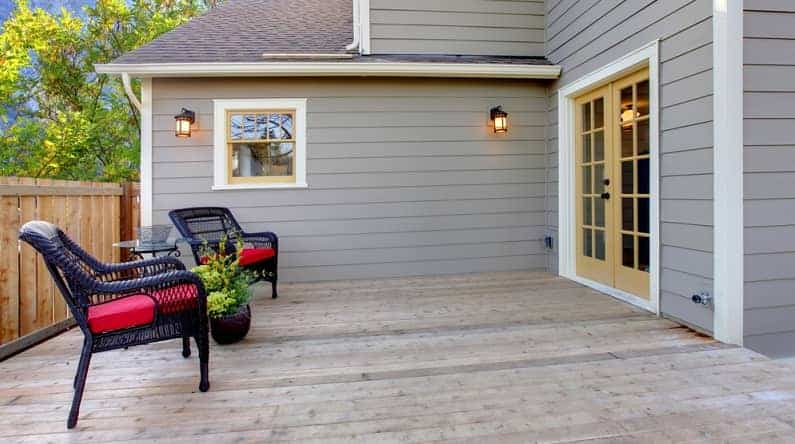
The next perimeter zone is the yard itself.
It is very important that this perimeter is kept clear of obstructions such as large bushes that intruders could hide behind.
Of course, we all love to have trees and foliage in our yard – just keep them trimmed and away from windows and doors. The last thing you want to do is provide an intruder with coverage while he pries open your windows!
Examples of barriers to go in this perimeter zone are motion-sensor lights, barking dogs, and motion sensor alarms.
3rd Perimeter:
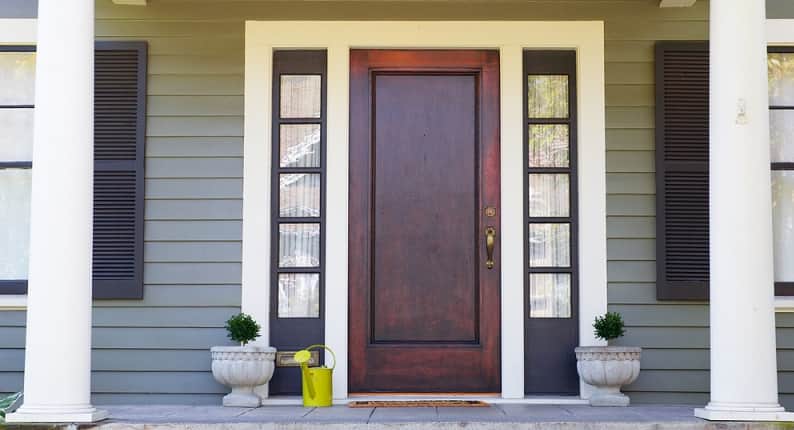
The 3rd perimeter is the outside of your home.
If an intruder is able to get through the first two perimeters undetected, he would then come to your actual home.
The barriers here are your windows and doors.
4th Perimeter:
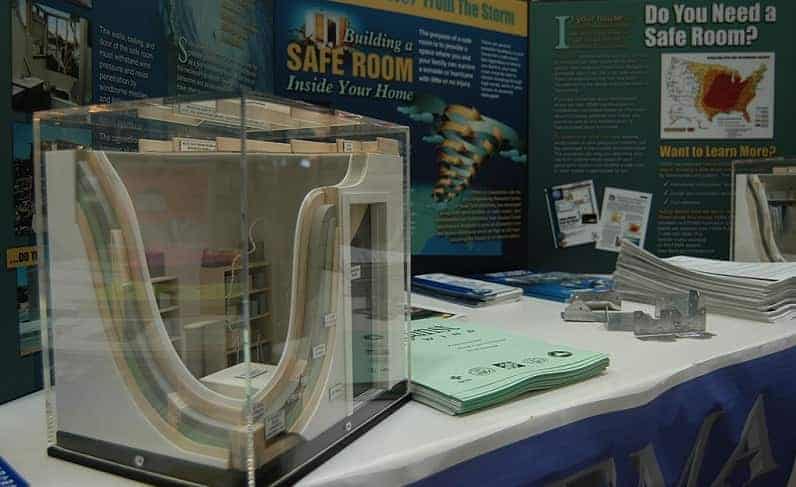
If an intruder is able to make it past all the barriers and gets into your home, the final perimeter is a safe room.
We will talk about safe rooms later but know that this space should have barriers like bullet-proof walls, secure doors, and furniture that can provide cover.
Apartment Perimeters
In an apartment building, the perimeters would look very different. The first perimeter is often the entrance or alley, which leads to a fire escape. For ground-floor apartments, the perimeter may be the actual sidewalk.
You can still add barriers to these perimeters – such as by putting barbed wire over alley entrances or using a doorkeeper for the building.
What’s important is that you take the time to recognize these perimeters so you can go about securing them. The more perimeters and barriers an intruder has to go through, the less likely he is to get inside.
How To Secure Windows
Standard windows are surprisingly easy to break in through.
Weak latches mean windows can be jimmied open with a crowbar.
Traditional glass can be smashed in one blow.
It will cost some money but consider the methods below to make your windows more burglar-proof.
Window Locks
Getting better locks for your windows is the cheapest and easiest way to reinforce them.
They aren’t foolproof but will deter many opportunist-type burglars. They’ll also make it take longer and be louder to break in.
There are a few different options for window locks. Some people choose to use multiple latches on the windows.
Others like a hefty pin-style lock. Avoid the cheap window locks made from plastic, as these break easily.
Impact-Resistant Glass
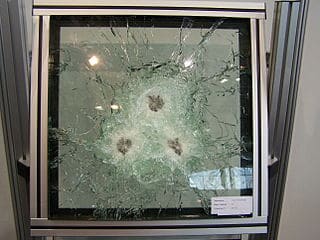
This will cost quite a bit but provides an extra layer of home defense.
Unlike traditional window glass, which can be kicked in easily, impact-resistant glass takes numerous bangs before it caves in.
The banging will make a lot of noise and hopefully, alert you or your neighbors to the home invasion.
There is also bulletproof window glass – and definitely quite pricey to install on all windows.
The good news is that impact-resistant glass won’t just protect you from intruders. It also is less likely to shatter during tornadoes and hurricanes, so you are protected against multiple types of disasters.
Window Film
This is a (usually) clear film that can be applied to windows to make them harder to penetrate. It is a good low-cost option, and you can read more about it in our guide to the best window security film.
Install Bars or Grills:

Bars over your windows don’t have to be ugly. There are a lot of styles to choose from.
However, I would warn that these same bars can be a hazard, such as by trapping you in your home during a fire.
If you install bars over your windows, ensure they have an emergency release latch.
You don’t want to be killed because you can’t escape your home!
How To Secure Doors
Getting a security door might seem like the best defense against intruders – but the real weak point at doorways isn’t the door itself. Rather, it is the door frame.
Most doors are secured in place with just a few small screws. This is why it is so easy to kick down a door.
Read more about how to stop your door from being kicked in and the door reinforcement options.
Experts recommend burglar-proofing your door by installing a metal frame that goes at least 3 inches into the frame of your home. Pair this with a steel door and it will be next to impossible to kick down your door.
If you can’t make this change (such as if you are renting), then consider these cheaper, less-invasive options:
- Get a security striker plate: Compared to standard striker plates, security striker plates are longer and use longer screws. Your door can still be kicked down, but it will take a lot more effort.
- Install a door barricade: These are bars that you mount on your door in brackets. They install quickly and prevent thieves from using crowbars to jimmy open doors.
As for door locks, deadbolts are the most popular choice. Remember that for the deadbolt to work, your doorframe has to be sturdy – hence the importance of reinforcing your doorframe.
Many people are opting for “smart locks,” which use codes or your smartphone to unlock the door.
These locking systems are still in their infancy, so you might want to wait until the technology progresses to invest in a system.
Sliding Patio Doors
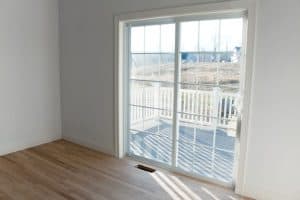
Burglars love sliding glass doors because they make breaking in so easy.
The latching methods on these doors are usually fragile and can be easily pried open. Or, they can just kick in the glass.
On top of that, the sliding doors provide a great view of all the valuables you have to steal.
To Secure Your Sliding Doors
- Install glass film on sliding doors: This will prevent intruders from seeing into your home.
- Invest in impact-resistant glass for the doors: If you can’t afford it everywhere, at least do it for your sliding doors.
- Add an extra lock: The latch locks on sliding doors are very weak. Install an extra lock, such as a loop lock or double-bolt lock.
- Use a security bar: A wooden dowel cut to size can prevent thieves from opening the sliding doors.
- Install an anti-jimmy plate: Burglars often enter homes by lifting sliding doors off the tracks. An anti-jimmy plate is screwed to the top of the sliding door track to fill some of the empty space. It is large enough to stop the doors from being lifted but small enough that the doors can still move unobstructed.
Garages
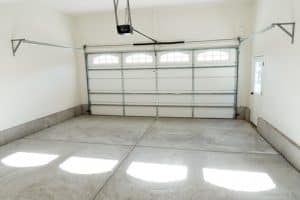
Garages are an ideal place for intruders to break in.
They are often left unlocked or have weak door locks that can easily be picked.
Once inside the garage, the thief has complete cover while he breaks into your home.
More skilled thieves can buy “code grabbing” devices that open garage doors.
Oh, and let’s not forget how many people leave their garage door openers in their car where it can easily be stolen!
Use these methods to secure your garage:
Rolling-code garage door openers:
Older garage door openers had the same few codes. Thieves could basically drive around the neighborhood pressing an opener to see which doors would open.
Today’s garage door openers are better and have customized codes. However, thieves can wait outside your home with a “code grabber.” When you open your garage door, the device captures the code and can use it to open the door later.
The most secure type of garage door openers have codes that change after each opening so they are harder to steal and hack into.
Inside your garage, there is an emergency release that allows the door to be opened manually.
One common way for thieves to enter a home is to “fish” out the emergency release. This can be easily done with a coat hanger slipped through the crack in the top of the door.
You can prevent fishing by installing a guard plate or using ties to lock the emergency release in place.
Secure doors:
The service doors to/from your garage need to be secured with the same level of defense as the other doors in your home.
Add lighting:
Put motion-sensor lights near the front of your garage and near any doors going into the garage. Lighting deters a lot of opportunist burglars.
Part 4: What to do if someone breaks into your house
The worst has happened – you hear a bump in the night and think there is an intruder in your home.
What do you do?
Do you go after the intruder with a gun or baseball bat? Do you fire warning shots into the night?
The best thing you can do to improve your safety is to make a plan. Talking with your family about what protocol to follow during a break-in isn’t being paranoid. It is being prepared.
The better prepared you are, the more likely your family will come out of the situation unharmed.
Safe Room
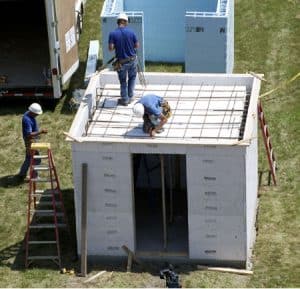 Safe room under construction
Safe room under construction
The most essential part of your home invasion plan is to establish a safe room. This is the place you will go to if you suspect an intruder has gotten into your home.
The idea behind a safe room is that it is easier to defend one room than your entire home.
It is also the rallying point for your family members so you can be sure of everyone’s safety.
Note that a safe room is not a bunker. Bunkers are often outdoors and thus would take too long to get to. Bunkers are also intended for longer-term survival.
Characteristics Of A Safe Room
- A place that all family members can get to easily
- Has a secure door that can be bolted
- Preferably has solid concrete or steel walls that can withstand gunfire
- Has furniture which can be used as cover (in case walls are not bulletproof)
- Contains a cell phone that can be used to call the police
- Is stocked with first aid supplies
- Has access to video feed from security cameras
Where to Put the Safe Room
You want to put the safe room in a place where everyone in the family could easily access it during an invasion.
The best place for a safe room is near the bedrooms
Even though the majority of home invasions occur during the daytime, those are usually planned for when you aren’t home. In other words, daytime intruders want to avoid contact with you and don’t plan on getting violent.
So, what we really need to plan the safe room for are violent home invasions at night.
With this in mind, the best place for a safe room is near the bedrooms.
Hopefully, everyone’s bedrooms are on the same floor. The further away people are from each other during the intrusion, the more likely they will have to cross paths with the intruder to get to the safe room.
Walk-in closets can be adapted as safe rooms. Bathrooms also are good choices for safe rooms, especially because they already contain water and a toilet.
Some people do recommend putting a safe room in a basement, but I believe that this is generally a bad idea. It would be very difficult to get to the basement, especially if the intruder is already in the home and bedrooms are on the first floor.
Getting Everyone to the Safe Room
This is where your home alarm system comes in handy. The more warning you have of the intruder, the faster you can get to the safe room. However, coming up with a plan to get everyone into the safe room can be very tricky.
Consider this scenario: Your young child is the first person to hear signs of an intruder. Does that child come and wake you, or does he go immediately to the safe room?
It is crucial is that you go over your plans with your family
On one side, having your kid go straight to the safe room means at least he is safe. On the other hand, if you aren’t woken up, the criminal could take you hostage – telling your child to open the door or he’ll kill you.
This is one reason why I like having our family’s safe room in our master bedroom walk-in closet. If our daughter hears an intruder before we do, she comes to tell us and we are all already near the safe room.
If we hear an intruder first (which is more likely since the warning system is connected to our phones), we could easily dash into her room (located across the hall) and quickly carry her into the safe room.
There is no one “best” solution on how to get everyone into the safe room. You’ve got to assess various factors, like the age of your kids, how sound of sleepers everyone is, and where you were able to put the safe room.
What is crucial is that you go over these plans with your family. You don’t want your kid cowering under his bed when he should really be making a mad dash to the safe room instead.
Once Everyone Is in the Safe Room:
Now is the time to call the police with the phone you have there. Another great trick is to use car alarm on your keys. Push the button to trigger the alarm – the noise should frighten the intruder off!
I’ve also heard of people keeping bullhorns in their safe rooms. Once everyone is in safely, you could use the bullhorn to shout, “the police are on the way.”
This goes against the logic of not giving away your location, but it might be a good trick to scare away intruders quickly if necessary, such as if one family member was still unaccounted for.
Clearing Your Home
Under no circumstances should your priority be to catch the intruder. Your primary goal is to keep everyone safe – which means getting them to the safe room.
The only time you should attempt to clear the home is if a family member was not able to get to the safe room and you are worried about their safety.
Even then, I would still advise against clearing the home.
Few people are trained to do this properly. Adrenaline would be racing and you could end up making a serious mistake – like accidentally shooting your family member. This, unfortunately, happens many times every year.
Top Tips
- Have security cameras installed inside your home. This will allow you to track the location of an intruder without having to expose yourself.
- Learn how to “slice the pie” to safely clear the home.
- Do practice drills. The more drills you do, the calmer you’ll be if you ever have to do this in real life.
Home Hostage Situations
A terrifying trend in home invasions is taking the family hostage. One family member is then sent to withdraw money from an ATM or bank. This is what happened during the horrendous Cheshire, CT murders.
The good news is that most of these hostage-robberies end without injury. You should follow the same protocols as during any other hostage situation:
Home Hostage Protocol
- Remain calm.
- Cooperate with the captors.
- Don’t attempt to escape unless you are sure you can get away safely.
- Treat the captors like they are completely in control.
- Try to strike up a bond with the captors. They are less likely to injure you if they feel a rapport.
- If help arrives, drop to the ground to avoid being hit by gunfire.
- Create a distress signal with your alarm company. When the company calls to check the alarm trigger, use your signal to convey that you are being held hostage. Something like “No, I don’t think we’ll be able to meet up tomorrow” is a good signal.
+ Resources


